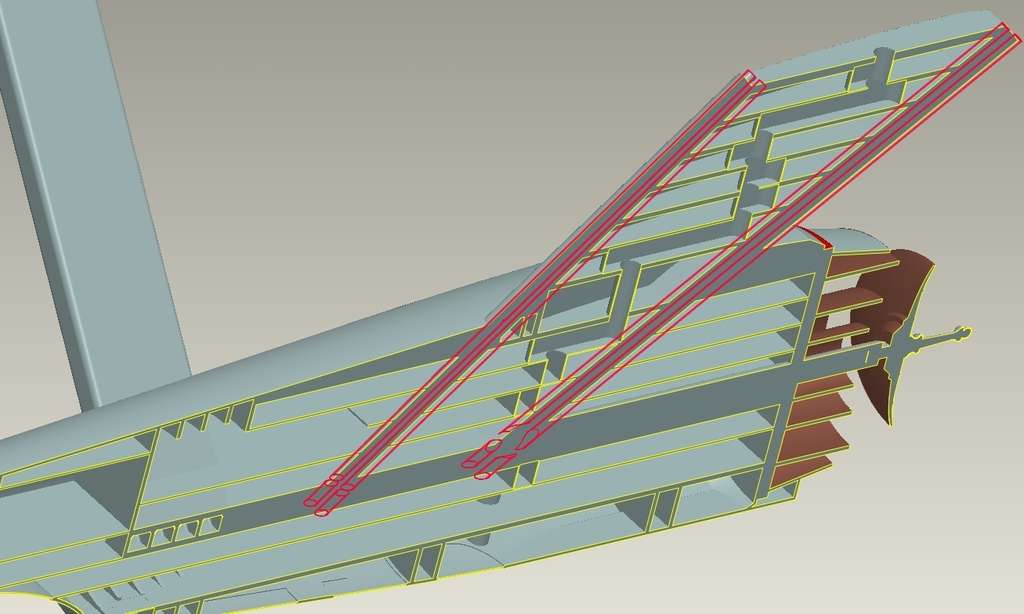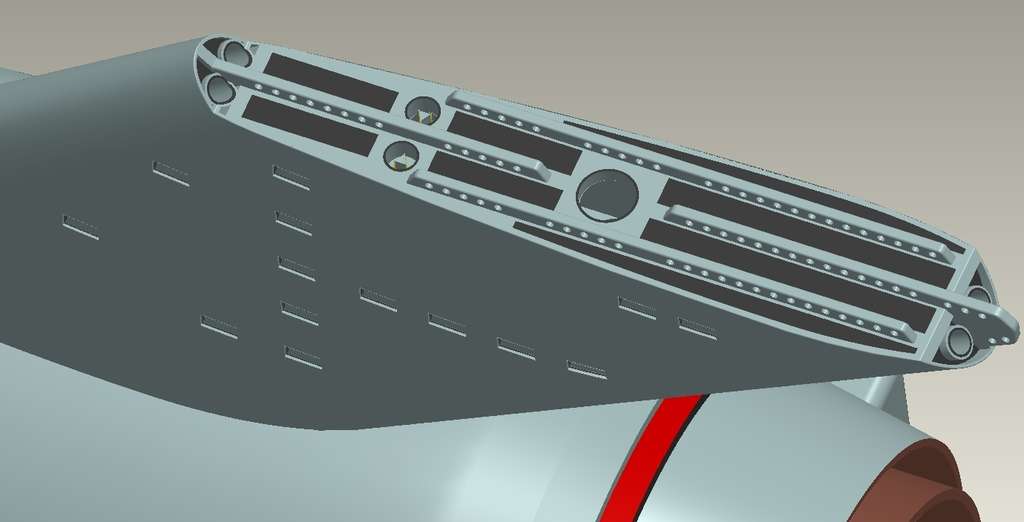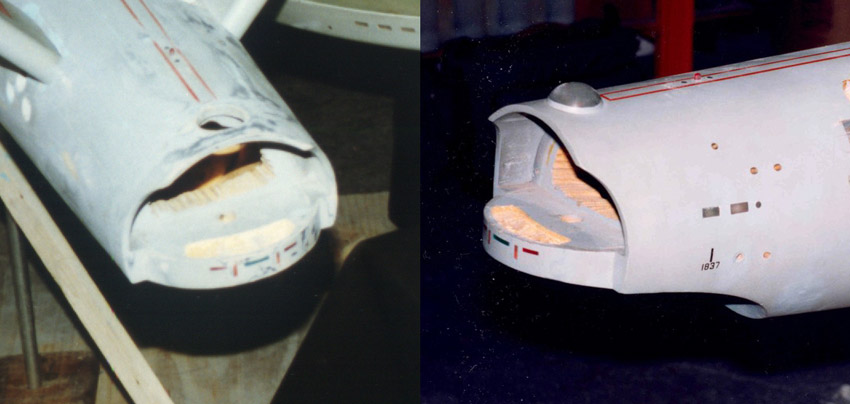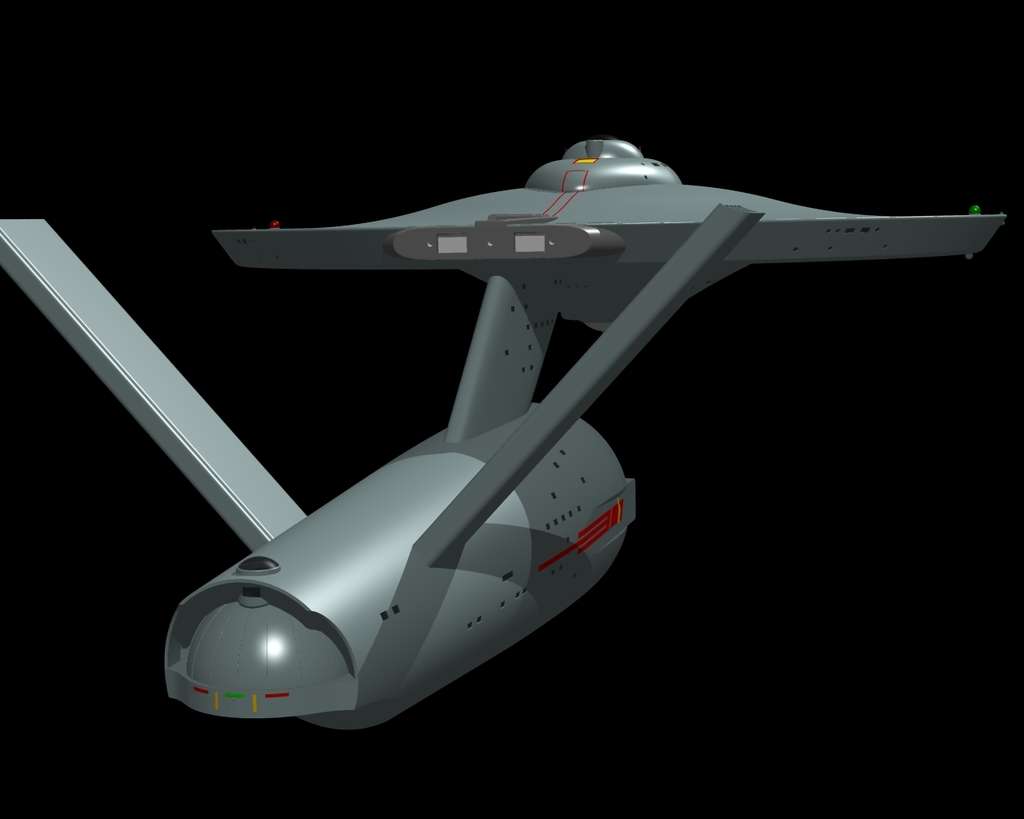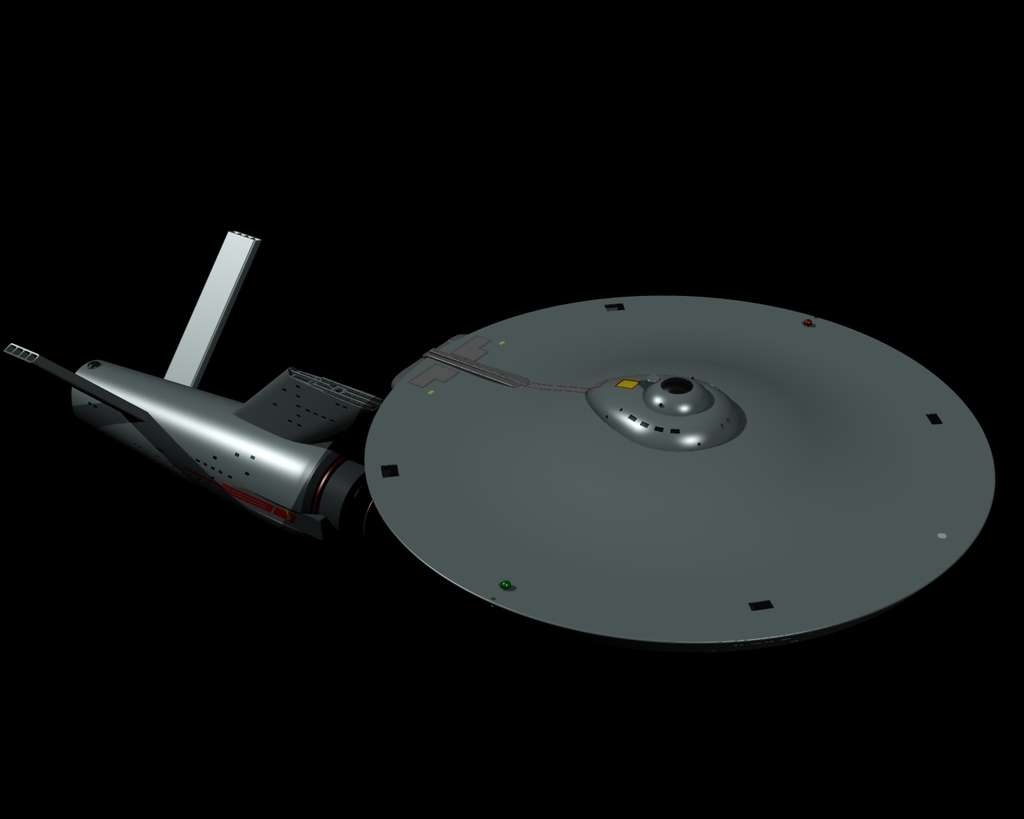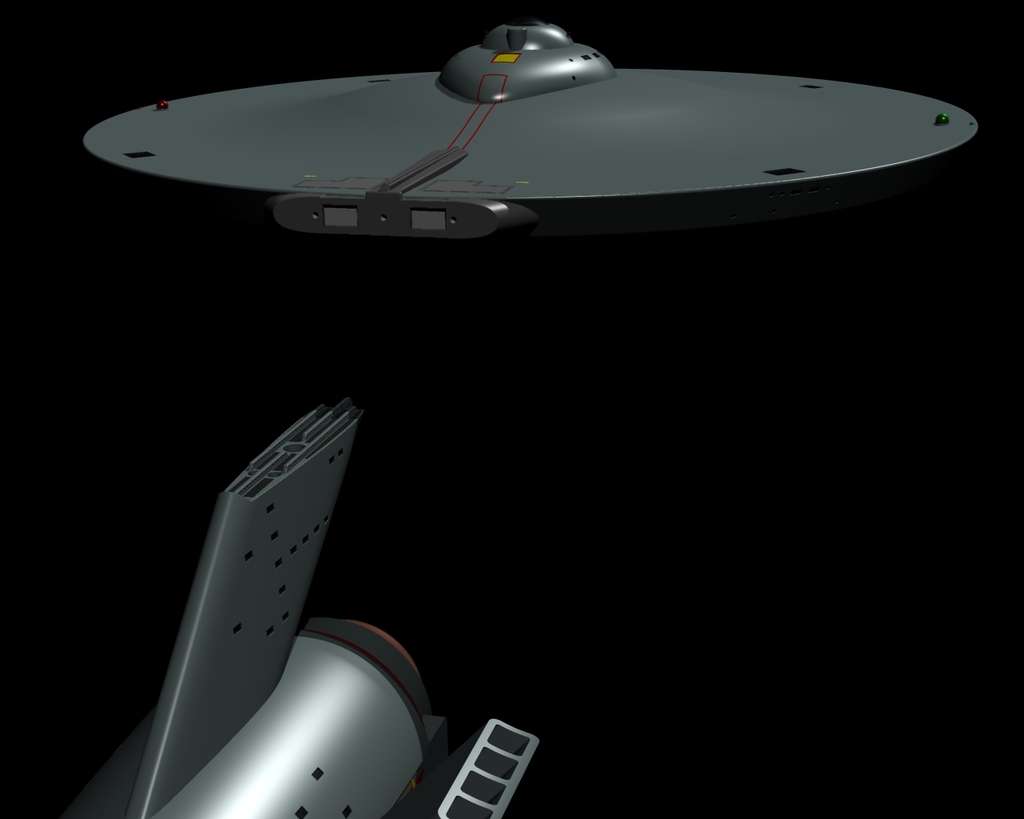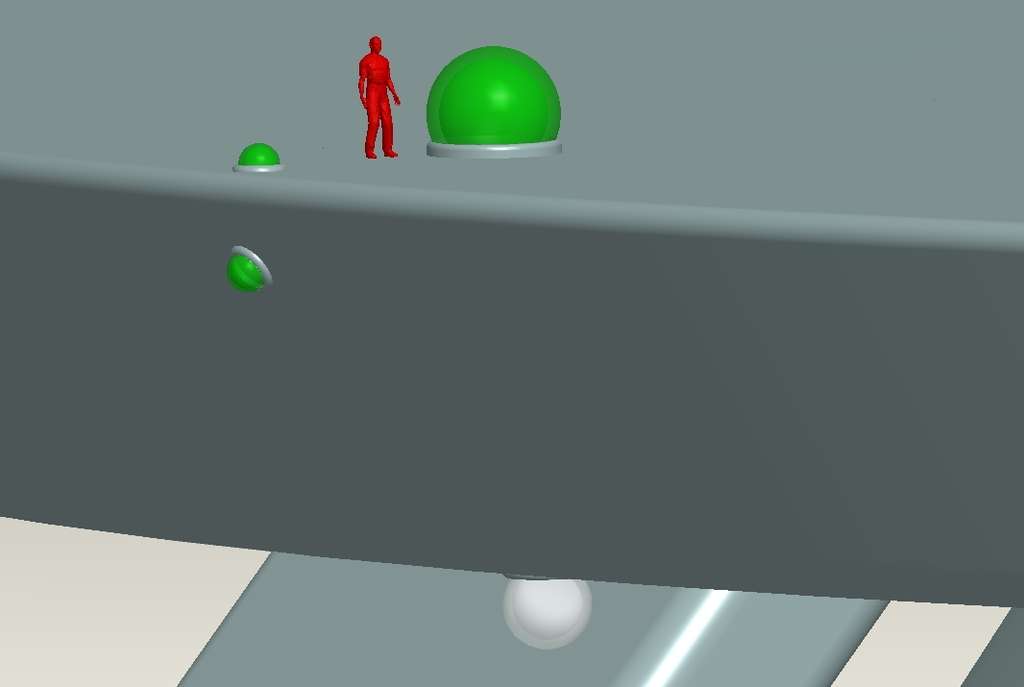I have a complaint, though not with you work, but with work done on the original model and I'd appreciate any thoughts you have on this matter. The glass shells over the port and starboard running lights are awfully damn big. Huge even. If I've forgotten any comments you've made on these systems in the past, I apologize, but why do you think they're so big and would you consider "modernizing" them for a more accurate size?
Well, for the sake of discussion, let's take a closer look at those features...
It's very interesting to note that there isn't just one lamp there, but several. The one "error" I seriously thought about correcting was to make the underside lamps colored as well... but that would've looked much different than what was seen on-screen, though technically it ought to have been that way.
The top lamp is larger than the bottom one. Each of the two larger lamps are what were once commercially-available bulbs, in what appear to be screw-in sockets. You used to see a lot of these bulbs around, for holiday lights and so forth, before mini-lights, and then LED Christmas lights came along.
However, it's worthwhile to note that there is another, smaller lamp next to the "big one" and yet another on the outer edge of the saucer. In order to accomplish what I think you're asking, the solution would be to remove the big lamp entirely, and just leave the little ones. A fair assessment?
So why did they not do that at the time? Well, first off, consider "production" constraints. You were looking at pretty low-res TV images, and the little lamps simply wouldn't show up on-screen. So they had to have larger lamps to get the desired effect and have it show up.
Okay, so that makes sense... but does having this make any sense in "real" terms? (That is, if you were designing a real starship to actually operate in space.)
Actually, yeah, I think it probably does, and for very much the same reason.
Despite the tendency for latter-day Trek effects to show ships flying so close that they could practically scrape paint, in a real-world situation, you'd almost never let yourself get that close to another vessel, unless you were planning to dock. Space, after all, is big... really, really big.
So, imagine that you're at extreme visual range... the little, tiny lamps would be totally undetectable. But the big ones would probably be able to be made out, and as a result you'd be able to determine the direction of travel of the ship you were observing, and even the size (within reason)... even if you were in actual deep space, where there is effectively no light except for "self-illumination" (starlight being so dim, relative to what our eyes can perceive, that it's not worth discussing, as far as I'm concerned).
So... "big lamps" make sense if you're going for "extreme range visibility," I think.
Note that "big" isn't the same as "bright," of course... it's entirely possible that the little lights could be brighter, per distance from bulb-center, than the big ones are.
Maybe the ship wouldn't operate both sets of lamps at once... maybe neither, on occasion.
Anyway, that's my take on it. I don't have a problem with the running lights being inside of those big glass spheres... just as long as the spheres don't look like classic 1950s/60s christmas tree lights inside!


 )
)

